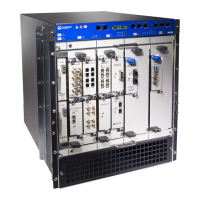Table 39: FPCs Supported by the M120 Router (continued)
First Junos OS
Release Support
Maximum Throughput
per FPC
Maximum Number
of PICs Supported
per FPCFPC Model Number
FPC
NameFPC Type
8.0R210 Gbps4M120-FPC2FPC22
8.0R210 Gbps1M120-FPC3FPC33
A CFPC is a combination of a PIC and an FPC. It contains the interface circuitry and the
FPC as a single assembly. The CFPCs provide receptacles for XFP optical transceivers.
The M120 chassis provides two slots for CFPCs, and supports any combination of CFPC
types. M120 routers support the CFPCs listed in Table 40 on page 57.
Table 40: CFPCs Supported by the M120 Router
Connector
First Junos OS
Release Support
Maximum
Throughput per
CFPCCFPC Model NumberCFPC Name
Duplex LC/PC (Rx
and Tx)
8.0R210 GbpsM120-cFPC-1XGE-XFP10-Gigabit Ethernet
Duplex LC/PC (Rx
and Tx)
8.0R210 GbpsM120-cFPC-1OC192-XFPSONET/SDH OC192/STM64
Related
Documentation
M120 Compact FPCs (CFPCs) Description on page 54•
• M120 Flexible PIC Concentrators (FPCs) Description on page 51
M120 PICs Description
PICs provide the physical connection to various network media types, receiving incoming
packets from the network and transmitting outgoing packets to the network. During this
process, each PIC performs framing and line-speed signaling for its media type. Before
transmitting outgoing data packets, the PICs encapsulate the packets received from the
FPCs. Each PIC is equipped with an ASIC that performs control functions specific to the
media type of that PIC.
The PIC slots are labeled PIC0, PIC1, PIC2, and PIC3, top to bottom and left to right. You
can install up to four PICs into the slots in a Type 1 or Type 2 FPC or one PIC in a Type 3
FPC. Type 1 and Type 2 PICs have captive screws at their upper and lower corners, and
Type 3 PICs have an upper ejector handle and a lower captive screw.
The router supports various PICs, including ATM, Channelized, Gigabit Ethernet, IP Services,
and SONET/SDH interfaces. Blank PICs resemble other PICs but do not provide any
physical connection or activity. When a slot is not occupied by a PIC, you must insert a
blank PIC to fill the empty slot and ensure proper cooling of the system. PICs are
hot-removable and hot-insertable.
57Copyright © 2018, Juniper Networks, Inc.
Chapter 6: Line Card Components and Descriptions

